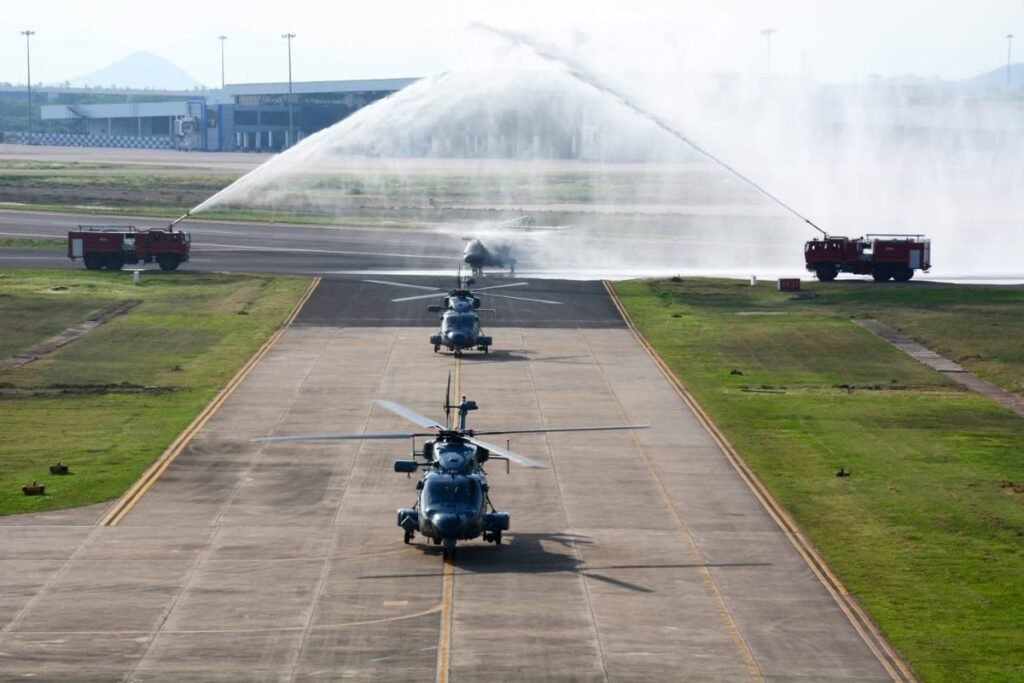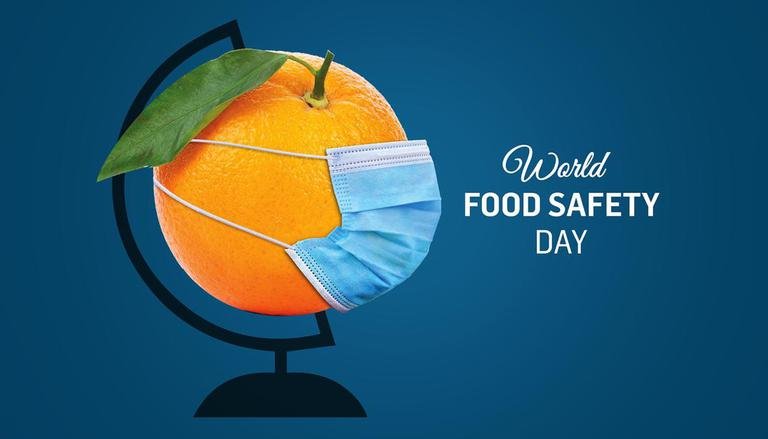Blog
June 8th Current Affairs
- June 8, 2021
- Posted by: admin
- Category: Culture Current Affairs Daily News Defense & Security Disaster Management Economy Education Environment & Ecology Ethics Geography Governance Health History International Relation Persons in News Polity Science & Technology Social Issues Sports Uncategorized UPSC Notification Videos
1. 322 Dega Flight

IN NEWS:
The induction ceremony of ‘322 Dega Flight’ was held in the presence of Vice Adm Ajendra Bahadur Singh, AVSM, VSM Flag Officer Commanding-in-Chief, Eastern Naval Command (ENC) with three indigenously built Advanced Light Helicopters (ALH) MK III helicopters flying into Naval Air Station, INS Dega on 07 Jun 21.
KEY POINTS:
- With the induction of these Maritime Reconnaissance and Coastal Security (MRCS) helicopters, the ENC got a major boost towards enhancing the capabilities of the force, in pursuit of the maritime interests of the nation.
- These helicopters, built by Hindustan Aeronautics Ltd, are state-of-the-art flying machines and constitute a major step in our quest for “Atma Nirbhar Bharat”.
- ALH MK III helicopters feature an array of systems previously seen only on heavier, multi-role helicopters of the Indian Navy.
- These helicopters are fitted with modern surveillance radar and electro-optical equipment, which enable them to undertake the role of maritime reconnaissance in addition to providing long-range Search and Rescue, both by day and night.
- In addition to special operations capabilities, ALH MK III is also fitted with a heavy machine gun to undertake constabulary missions.
- A removable Medical Intensive Care Unit (MICU) is also fitted on ALH MK III helicopters to airlift critically ill patients.
- The helicopter also has a host of advanced avionics, making it truly an all-weather aircraft.
SOURCE:PIB
2. E-booklet on 20 MoD reforms in 2020.

IN NEWS:
- Raksha Mantri Shri Rajnath Singh releases E-booklet on 20 MoD reforms in 2020;
- Terms it as a reflection of Government’s resolve to make defence sector stronger and more efficient.
KEY HIGHLIGHTS:
Chief of Defence Staff & Department of Military Affairs:
- The appointment of India’s first Chief of Defence Staff (CDS) and creation of the Department of Military Affairs (DMA) were among the major decisions taken by the Government.
- General Bipin Rawat was appointed as the first CDS who also fulfilled the responsibilities of Secretary, DMA.
- The post of CDS was created to increase efficiency & coordination among the Armed Forces and reduce duplication, while DMA was established to ensure improved civil-military integration.
Self-Reliance in Defence:
- To promote ‘Make in India’ in the defence sector, a list of 101 defence items for which there would be an embargo on the import was notified in August 2020, while Defence Acquisition Procedure 2020 was unveiled in September 2020.
- There was a 10% budget increase in 2020-21 over the previous year.
Increased Defence Exports:
- The increased partnership with the private sector has led to a substantial rise in defence exports.
- The value of total defence exports rose from Rs 1,941 crore in 2014-15 to Rs 9,116 crore in 2019-20. Also, for the first time, India figured in the list of defence equipment exporting nations, as the exports expanded to more than 84 countries.
Defence Acquisitions:
- First five Rafale fighter aircraft arrived in India in July 2020 and several more since then, adding firepower to the arsenal of the Indian Air Force.
Reforming Defence R&D:
- To promote innovation by young minds, five Young Scientists Laboratories of Defence Research and Development Organisation (DRDO) were launched in 2020.
- DRDO has joined hands with the private sector in design & development and identified 108 Systems & Subsystems for the industry to design, develop and manufacture.
Digital Transformation:
- Directorate General Quality Assurance (DGQA) started online Pre-Delivery inspection in May 2020 to address security threats.
- The Armed Forces Tribunal began digital hearing for the first time in August 2020.
Strengthening Border Infrastructure:
- Reforms of processes and workflows within Border Roads Organisation (BRO) enabled it to achieve targets ahead of schedule, in some instances.
- World’s longest Atal tunnel above 10,000 feet, at Rohtang on the Leh-Manali Highway was inaugurated.
Participation of Women in Armed Forces:
- Ten streams of Indian Army were opened for giving Permanent Commission to Short Service Commission (SSC) Women officers.
- All Sainik Schools were thrown open for girl students from academic session 2020-21.
Reforms in National Cadet Corps :
- Expanding the reach of the National Cadet Corps (NCC) to remote locations was a major announcement.
- It was decided to give preference to NCC cadets in employment in Central Armed Police Forces from May 2020.
Aid to Civil Administration during Covid-19:
- The Ministry of Defence and the Armed Forces have mobilised resources to aid the civil administration in the fight against Covid-19.
- DRDO has set up several hospitals to treat Covid patients across the states, passed on technology expertise to the private sector for mass production of covid related medicines and equipment.
Help beyond Boundaries:
- The Armed Forces extended a helping hand to the countries in distress. Indian Navy mounted eight relief missions during 2020-21.
- Besides evacuating stranded Indians from Iran, Sri Lanka and Maldives under Vande Bharat Mission, Indian Naval ships provided Covid-19 medical relief to five countries.
- INS Airavat provided 270 MT food aid to Sudan, Djibouti and Eritrea struck by natural calamities.
- The Indian Coast Guard led the rescue operation to save the Sri Lanka coast from its biggest oil spill.
SOURCE:PIB
3. World Food Safety Day

IN NEWS:
- Dr Harsh Vardhan, Union Minister for Health and Family Welfarevirtually attended the Word Food Safety Day celebrations organized by Food Safety and Standards Authority of India (FSSAI).
- The day is celebrated worldwide to draw attention to the fact that food is not only an agricultural or trade commodity but is also a public health issue.
KEY POINTS:
- This year’s World Food Safety Day theme – ‘Safe Food for a healthy tomorrow.
- The World Health Organization (WHO) and the Food and Agriculture Organization of the United Nations (FAO) jointly facilitate the observance of World Food Safety Day, in collaboration with Member States and other relevant organizations.
- It was first celebrated in 2019, to strengthen the commitment to scale up food safety made by the Addis Ababa Conference and the Geneva Forum in 2019 under the umbrella of “The Future of Food Safety”.
- To draw attention and inspire action to help prevent, detect and manage foodborne risks, contributing to food security, human health, economic prosperity, agriculture, market access, tourism and sustainable development.
Importance of Food Safety:
- Access to sufficient amounts of safe food is key to sustaining life and promoting good health.
- Foodborne illnesses are usually infectious or toxic in nature and often invisible to the plain eye, caused by bacteria, viruses, parasites or chemical substances entering the body through contaminated food or water.
- An estimated 4,20,000 people around the world die every year after eating contaminated food and children under 5 years of age carry 40% of the foodborne disease burden, with 1,25, 000 deaths every year.
Indian Initiatives for Food Safety:
State Food Safety Index ,
Eat Right India Movement,
Eat Right Awards,
Eat Right Mela.
SOURCE:PIB
4. I-Familia.

- The Interpol has launched a new global database named ‘I-Familia’.
- It will identify missing persons or unidentified human remains around the world through DNA of relatives.
KEY POINTS:
- The first of its kind, I-Familia is a global database for identifying missing persons based on international DNA (deoxyribonucleic acid) kinship matching.
- The database seeks to identify missing persons or unidentified human remains when direct comparison is not possible, by using DNA samples from family members instead.
- Family members must give their consent for their data to be used for international searching.
- It builds on Interpol’s long-standing success in direct DNA matching.
I-Familia has three components:
- A dedicated global database to host the DNA profiles provided by relatives, held separately from any criminal data.
- DNA matching software called Bonaparte.
- Interpretation guidelines, produced by Interpol, to efficiently identify and report potential matches.
- In the event of a match, notifications are sent to the countries that supplied the DNA profile from the unidentified body and from the family respectively.
Significance:
There is growing international concern about the number of missing persons and unidentified victims around the world due to increased international travel, the prevalence of organized crime and human trafficking, the rise in global migration, conflicts and natural disasters.
All countries have unsolved missing persons investigations as well as human remains that cannot be identified using their national systems alone.
SOURCE:TH
